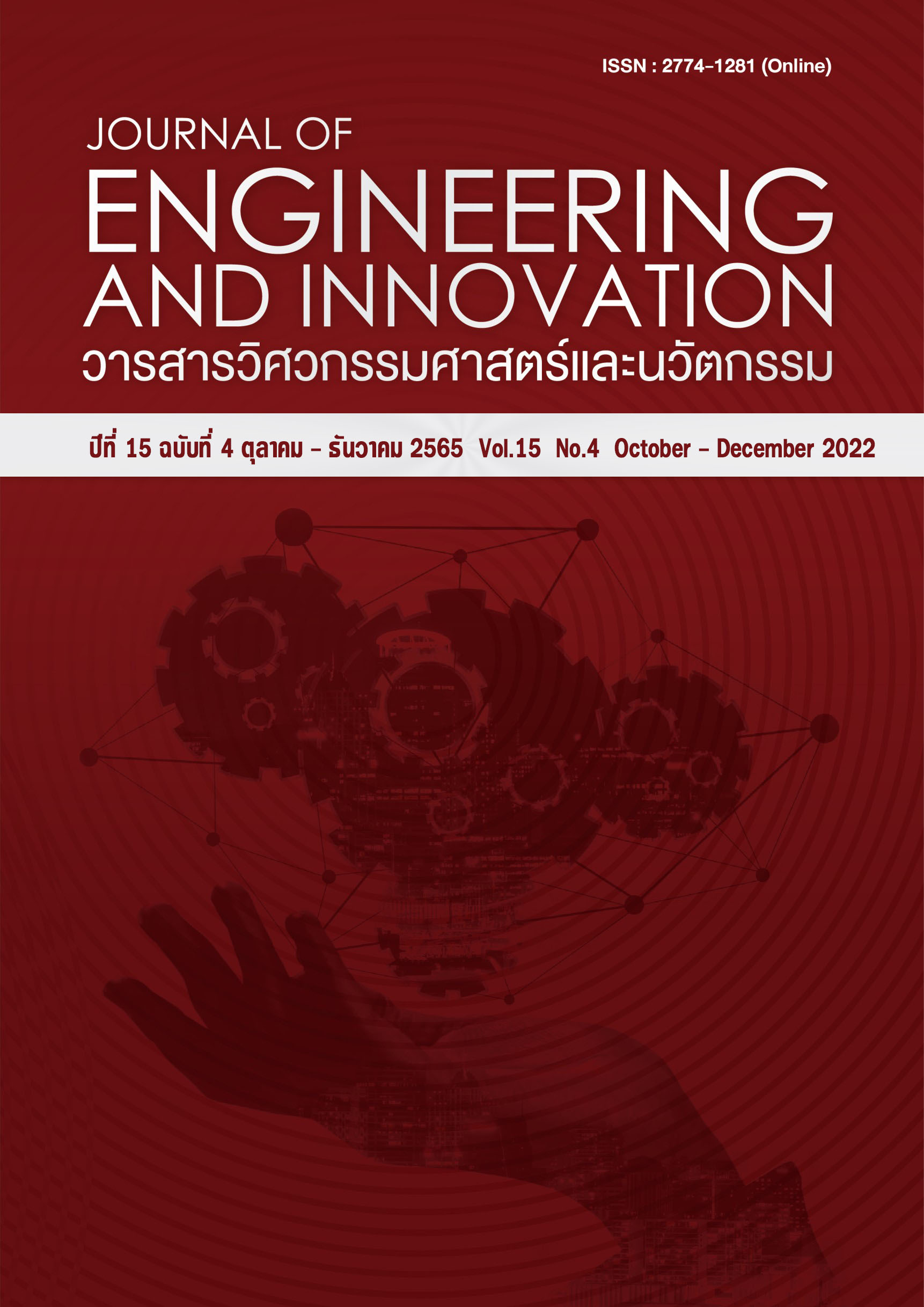A study of human resource management and knowledge management influencing the performance of Thai infrastructure contractors
Main Article Content
Abstract
Due to the intense competition in the Thai infrastructure construction industry, a conventional advantage of construction firms using capital and machinery is outdated. One thing that the Thai construction firms can do is to better employ human resource management (HRM) and knowledge management (KM) as a tool for increasing the competitive advantage. This article applies the Structural Equation Model (SEM) to analyze the influence of HRM and KM on organizational performance (OP) in the Thai construction firms. The results showed that HRM, KM, and OP are related to each other. In fact, HRM had the strongest influence on the performance of firms under study. It also had a positive and statistically significant influence on knowledge management, which also affects firms' performances.
Article Details
References
วิสูตร จิระดำเกิง. โครงการก่อสร้าง. ใน: การบริหารงานก่อสร้าง (Construction Management). ปทุมธานี: สำนักพิมพ์มหาวิทยาลัยรังสิต; 2543. หน้า 2-8.
กวี หวังนิเวศน์กุล. บทนำ. ใน: การบริหารงานวิศวกรรมก่อสร้าง. กรุงเทพฯ: สำนักพิมพ์ ส.เอเชียเพลส; 2547. หน้า 11-12.
Krungsri Research. Industry Outlook 2019-2021: Construction Contractor. Available from : https://www.krungsri.com/bank/getmedia/7fe
e975-13f4-4040-a276-0d40841e504b/IO_
Construction_Contractor_190606_TH_EX.aspx [Accessed 10 August 2020].
Marquardt M. Knowledge Management in Learning Organizations. In: Building the Learning Organization. New York: McGrawHill; 1996. p. 162-178.
Nonaka I, Takeuchi H. Introduction to Knowledge in Organizations. In: The knowledge-creating company. New York: Oxford University Press; 1995. p. 7-9.
Al-Hakim LAY, Hassan S. Knowledge management strategies, innovation, and organizational performance. Journal of Advances in Management Research. 2013;10(1): 58-71.
Al-Hawari M. Knowledge management styles and performance : a Knowledge space model from both theoretical and empirical perspectives. Thesis Ph.D. The University of Wollongong; 2004.
Bakar AHA, Yusof MN, Tufail MA, Virgiyanti W, Adcroft A, Lohrke F. Effect of knowledge management on growth performance in construction industry. Management Decision. 2016;54(3): 1-19.
Harvey D, Bowin RB. (1996). The Success System: Anticipating Success. In: Human Resource Management: An Experiential Approach. New Jersey: Prentice Hall; 1996. p. 6
Dessler G, The Strategic Role of Human Resource Management. In: Human Resource Management, 9th ed. New Jersey: Prentice Hall; 2003. p. 4-5.
เสน่ห์ จุ้ยโต. การจัดการทรัพยากรมนุษย์เชิงกลยุทธ์. ใน: กระบวนทัศน์ใหม่การบริหารทุนมนุษย์. นนทบุรี: โครงการส่งเสริมการแต่งตำรา มหาวิทยาลัย
สุโขทัยธรรมาธิราช; 2554. หน้า 12-18.
Huselid MA.The impact of human resource management practices on turnover, productivity and corporate financial performance. Academy of Management Journal. 1995;38(3): 635-872.
Akhtar S, Ding DZ, Ge GL. Strategic HRM practices and their impact on company performance in Chinese enterprises. Human Resource Management Journal. 2008;47(1): 15-32.
Gurbuz S, Mert IS. Impact of the strategic human resource management on organizational performance: Evidence from Turkey. The International Journal of Human Resource Management. 2011;22(8): 1803–1822.
Delery JE, Doty DH. Modes of theorizing in strategic human resource management: Tests of universalistic, contingency, and configurational performance predictions. Academy of Management Journal. 1996;39(4): 802–835.
Kaplan RS, Norton DP. Strategic Learning & The Balanced Scorecard. Strategy & Leadership. 1996;24(5): 18-24.
Olomolaiye A, Egbu CO. Linking human resource management and knowledge management for performance improvements: a case study approach. Construction and Building Research Conference (COBRA) 2006, 7th-8th September 2006, London: The Bartlett School; 2006.
Zhai X, Liu AM, Fellows R. Role of Human Resource Practices in Enhancing Organizational Learning in Chinese Construction Organizations. Journal of Management in Engineering. 2014;30(2): 194-204.
Liu PL, Tsai CH. Effect of knowledge management systems on operating performance: An empirical study of hi-tech companies using the balanced scorecard approach. International Journal of Management. 2007;24(4): 734-743.
Zack M, McKeen J, Singh S. Knowledge management and organizational performance: an exploratory analysis. Journal of Knowledge Management. 2009;13(6): 392-409.
Chen YY, Yeh SP, Huang HL. (2012). Does knowledge management “fit” matter to business performance?. Journal of Knowledge Management. 2012;16(5): 671-687.
Yahya S, Goh W. Managing human resources toward achieving knowledge management. Journal of Knowledge Management. 2002;6(5): 457-468.
Hislop D. Linking human resource management and knowledge management via commitment: A review and research agenda. Employee Relations. 2003;25(2): 182-202.
Schumacker RE, Lomax RG. Data Entry and Edit Issues. In: A Beginner’s Guide to Structural Equation Modeling. New Jersey: Lawrence Erlbaum Associates; 1996. p. 12-16.
Hair JF, Black WC, Anderson RE, Tatham RL. Analysis Using Dependence Techniques. In: Multivariate Data Analysis, 7th ed. New Jersey: Prentice Hall; 2010. p. 154-176.
Cronbach LJ, Meehl PE. Construct validity in psychological tests. Psychological Bulletin. 1995;52(4): 281–302.
Byrne BM. Confirmatory Factor Analytic Models. In: Structural equation modeling with AMOS: Basic concepts, applications, and programming, 2nd ed. London: Routledge/Taylor & Francis Group; 2010. p. 67-182.
Bagozzi R, Yi Y. On the Evaluation of Structural Equation Models. Journal of the Academy of Marketing Sciences. 1988;16: 74-94.

